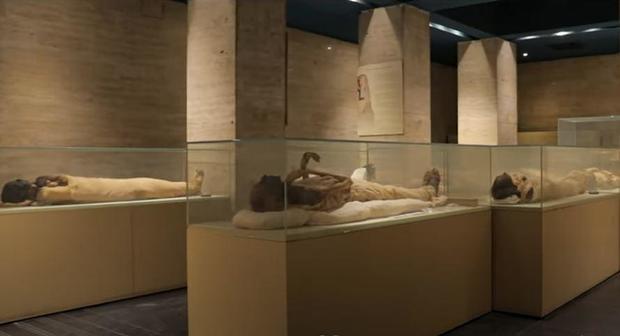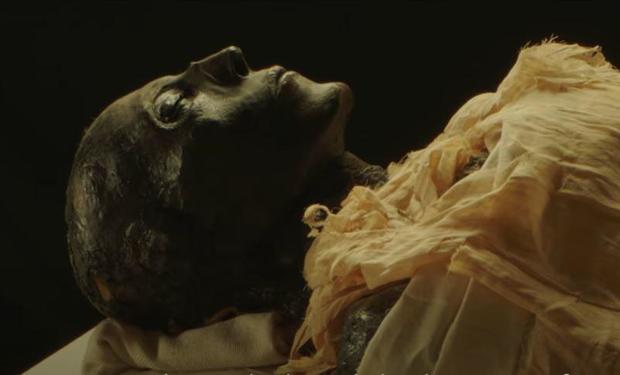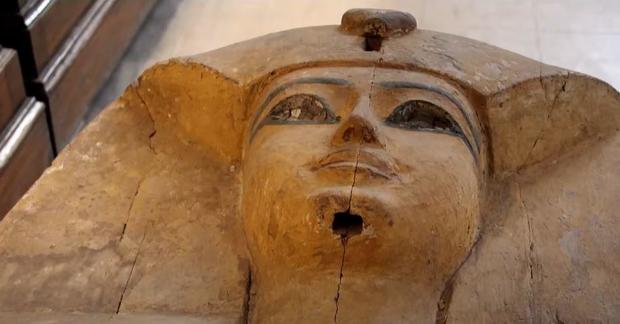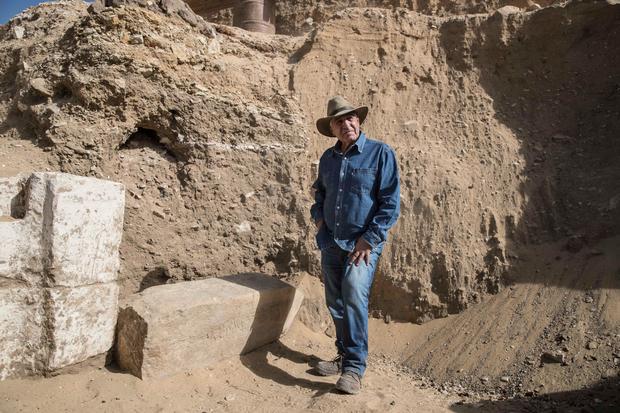22 royal mummies, kings and queens who died more than 3,000 years ago, are going on parade in Egypt
By Ahmed Shawkat
Cairo — This weekend, Egypt is putting on a parade for its royalty. But the guests of honor in this procession have all been dead for more than 3,000 years.
On Saturday, 22 royal mummies will be paraded through the streets of downtown Cairo. As the sun sets, the ancient monarchs will depart the Egyptian Museum in Tahrir Square in a grandiose parade, each of them on their own decorated vehicle surrounded by a festival-like motorcade, complete with music, lights, costumes and horses.
The "Pharaohs' Golden Parade" will move along the River Nile to Egypt's first Islamic capital, Al-Fustat, in old Cairo, until it reaches the National Museum of Egyptian Civilization (NMEC).
The group includes 18 kings and four queens from the 17th to the 20th dynasties of ancient Egypt — approximately 3,500 to 3,100 years ago. Most of the 22 kings and queens were discovered in two archaeological "caches" in Luxor in the late 1800s.
Grave robbers and a family feud
Years after these monarchs died, Egypt had become divided and weak, and grave robbery was rampant. Priests had to hide the royal mummies, moving them to hidden tombs to protect them from grave robbers.
Their efforts remained successful until the first cache in Luxor was discovered in the 19th century when, the story goes, a young man's goat went astray.
"In 1871 a member of the family of Abd al Rasul [who were tomb robbers] was leading goats. One of them ran away, up to the mountain south of the temple of Queen Hatshepsut," archaeologist Zahi Hawass told CBS News. "When the man ran after the goat, he found a shaft. When he entered, he found himself in front of mummies, coffins and gold."
The family kept the secret for 10 years, robbing the tomb, until royal artifacts started to surface for sale around the world. Officials arrested one of the family members and interrogated him for a month. The man said nothing. When he was released, he asked his family for a bigger share as compensation.
"They refused and began to fight. Another member of the family went to the police and told them about the cache," Hawass said.
From unwelcome, to presidential welcome
Ancient Egyptians had a very sophisticated set of religious beliefs, including a detailed explanation for what comes after someone's Earthly life, but they likely never saw this coming.
The mummies were loaded onto boats and transferred down the Nile from the dig site to Cairo. But when the long-dead kings and queens arrived in their country's new capital, they were denied entry. Cairo's customs inspectors of the late 19th century found that the word "mummy" did not appear within any category of goods permitted for entry.
But as Hawass explained, they found a solution: The mummies were labeled "salted fish," and welcomed to Cairo. They were first taken to the Bulaq Museum, but later moved to the Egyptian Museum in 1902. They first went on public display in 1958.
This time around, the royal mummies will be welcomed to their new home in the capital by their contemporary counterpart — or the closest figure in present day Egypt, President Abdel Fattah el-Sisi.
But why move 22 royal mummies anyway, and what's the parade all about?
Why the move?
The once-thriving tourism industry is one of Egypt's primary sources of income, but it has suffered badly since the arrival of an uninvited guest last year. Thanks to COVID-19, the United Nations has described 2020 as the worst year in global tourism history.
Clearly the parade is seen as a way to reinvigorate interest in Egypt as a destination as the global travel industry eyes a rebound. Many Egyptians, including in the government, want this event to look good.
One talk show host went so far as to ask residents along the parade route hide junk on the roofs of their buildings, just for a day, for the sake of Egypt's public image, knowing their will be aerial footage of the royal procession.
The event will also include the unveiling of an obelisk and the unboxing of four sphinxes in the center of Cairo's famous Tahrir Square. The artifacts have been installed and waiting for their debut for several months now.
The entire parade will be live-streamed by Egypt's Ministry of Tourism and Antiquities.
Controversial attractions
Despite the obvious draw Egypt's ancient history offers its tourism industry, mummies are, after all, deceased human beings, and there has always been a simmering debate over whether they should simply be left buried, or at least reburied, rather than put on display for gawping visitors.
Digging up graves is forbidden in Islam, and Dr. Ahmad Karima, a professor of Islamic law at Cairo's Al-Azhar University, recently raised the issue again, arguing: "These are our accentors, we shouldn't have them displayed for some dollars and euros."
He said bodies should only be exhumed for scientific research, after which they should be promptly reburied.
Former President Anwar Sadat, during a visit to the Egyptian Museum in the 1980s, ordered the closure of the Royal Mummies Hall, and it remained closed for seven years.
Archaeologists who oppose the hiding of mummies insist they aren't tomb robbers, noting that they preserve the ancient remains and protect them from being looted or destroyed — and they need to do their work to learn about the past. DNA tests and CT scans continue to change what we know about how ancient Egyptians lived, and died.
Who were these royals?
Of the 22 royal mummies taking up residence at the National Museum of Egyptian Civilization, 20 will be put on display and two, Queen Meritamun and Queen T, will be stored.
The 20 going on display, from oldest to youngest, are: Seqenenre TaaII, Ahmose Nefertari, Amenhotep I, Thutmose I, Thutmose II, Hatshepsut, Thutmose III, Amenhotep II, Thutmose IV, Amenhotep III, Seti I, Ramses II, Merenptah, Seti II, Siptah, Ramses III, Ramses IV, Ramses V, Ramses VI and Ramses IX.
"Every mummy has a story, every mummy is magic," Hawass told CBS News. He will be telling some of those stories at the event on Saturday — a day, he said, "that will be remembered."
"The new showroom is more like a one-way circle maze. All the walls are black, with spotlights on the mummies," Sayed Abu-El Fadal, a spokesman for the NMEC, told CBS News. "It is designed like the tombs in the Valley of the Kings."
The new display hall will include x-rays and scans of the mummies, and some of their belongings.
Over more than 3,000 years these kings and queens will have moved from one tomb to another, from one capital to another and from one museum to another. Hopefully, after Saturday they'll finally be allowed to rest in peace.
-- Sent from my Linux system.







No comments:
Post a Comment